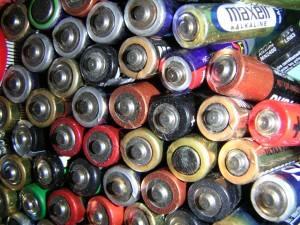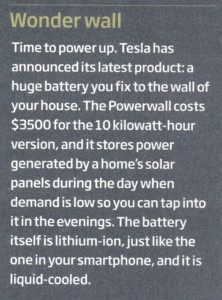
By The Metric Maven
Bulldog Edition
Recently I was visiting Albuquerque New Mexico. While there, I went to the National Museum of Nuclear Science. It was an interesting enough experience, but it was the gift store that made the largest impact. On the back wall was a number of educational laminated exercise sheets. They are about 440 mm x 305 mm in size. The first to catch my attention was a sheet intended to “educate” young people about U.S. weights and measures. The U.S. weights and measures sheet seemed very simplified, and is reproduced below:

The typeface is large and legible, about 10 mm or so in height. There is plenty of space between the lines of text and the graphic design is very open and accessible.
When I found the metric version of this “educational resource” I was aghast. The typeface is reduced to about 5 millimeters in height, and the graphic design is cluttered. Clearly when one looks at this metric presentation, and compares it with the U.S. version, the metric version is just so complicated that only a Nobel Prize winner could understand it. The message is clear, U.S. Ye Olde English is simple, the metric system is complicated. The metric version is reproduced below for comparison:

The U.S. version has no metric equivalents on it. The metric version has Ye Old English equivalents on it. This is the first source of clutter. The second source of clutter is the prefix cluster around unity. The length section has millimeters, centimeters, decimeters, dekameters, hectometers and Kilometers. The same set of prefixes is used for the liter and the gram, with Ye Olde English equivalents added.
In my essay Naughtin and 1929, I wrote about a newspaper that was introducing the metric system that year and made it appear much more complex than needed. What was done there seems like a peccadillo compared with this group of Mormons making coffee. We are treated to a history lesson that explains: “The Metric System was first proposed in France in 1670 by Gabriel Mouton. It is a system based on mathematics and not the size of a king’s body part.” No, the system part of the metric system was proposed by John Wilkins in 1668. It relies on scientific phenomena as a basis, and simplicity in expression. It is pointed out that the U.S. is “the only major country in the world not to adopt it.”
This product is called a Painless Learning Placemat, and has a 2014 copyright, so it is not a relic from the 1970s, it is contemporary obfuscation. At the bottom of each placemat is “Made in U.S.A.” The Ye Olde English measures placemat does not have the center section taken up with a history of measurement, and the SI prefixes with the prefix cluster around unity added. It does have SI Punctuation Rules. Rule #2 is not to use plurals on the unit symbols, so it’s: “hg not hgs.” One would not want to get their hectograms in a bunch. Rule #3 is there are no periods after units, it’s: “cg not cg.”, so make sure you have your centigrams without periods, as you will also be using lots of centigrams in your new fantasy metric world.
I will give the author(s) some credit for the other rules—mostly. Rule #1 is to leave a space between a numerical value and its metric symbol. They have 5 g not 5g. Rule #4 is to use a space instead of a comma for large numbers. However, the space they use in their example is so small that a young person (or the instructor) might be confused that a space exists. The kerning is awful:

Perhaps 10 000 and 10,000 might have been a better example?
Rule #5 advocates a leading zero on decimals. Their example is 0.6 mm not .6 mm. This is good, but when possible in a list of presented values, whole numbers are most expressive. 600 μm is succinct and this possible choice should be explained.
The reverse side of this placemat has “metric exercises” for the young person. They mostly involve the prefix cluster around unity, and therefore are for “practical” everyday use:

There are many more exercises in futility on the back side of the placemat. One is to “Draw a line from the prefix to its correct numerical value.” These include mm, cm, dm, dk, hm, km with 10, 0.01, 0.1, 100, 0.001, 1000. One is then to take the prefix symbols and match them with the full prefix cluster. This includes mg, kg, dg, dkg, cg, hg, with dekagram, hectogram, milligram, kilogram, decigram and centigram. Those of you that are metric pedants will immediately notice that rather than using da for deca, this placemat has dk instead. It seems apparent to me, that when confronted with dkg, it’s possible for a young person to see it as a decikilogram. Well over 75-80% of the area of the backside of the metric placemat is taken up with the important task of understanding hecto, deca (sorry….deka), deci and centi. Metric is not better by 1000 on this placemat, it’s ten times worse. This “educational tool” is an unintentional argument for eliminating the prefix cluster around unity.
What young person would choose metric over Ye Olde English when they see nothing but complexity staring at them? The idea that more prefixes exist, such as Mega, Giga, micro, nano and so on, would certainly produce loathing for this complicated system, and budding American exceptionalism could possibly follow. The back side of the Ye Olde English placemat is far less dense, and tells you what you don’t have to remember:

The placemat does not mention Troy versus Avoirdupois pounds, even though silver and gold are weighed with Troy, and that seems fairly important. If a child understood the actual simplicity of the metric system, without the prefix cluster around unity, and was not conditioned with this misleading pre-metric placemat to see the U.S. weights and measures as simpler, they would revolt when they came across this set of exercises on the back side of the Ye Olde English placemat:

The metric placemat is so padded with worthless and pointless exercises, that it would probably convince the poor child that the Ye Olde English reverse side is easier than the back of the metric placemat. Considering the convoluted and misleading metric backside, it might actually be just about as bad—but of course it’s only typical of ignorance in action.
The U.S. placemat does not bother to relate any of the U.S. measurement units to metric units, but the metric placemat does—when it should not. In an actual adoption of the metric system, one changes to metric exclusively, and never looks back. The U.S. placemat has a small box explaining how to convert Fahrenheit to Celsius. On the U.S. back side, one is to parrot back this simple algorithm. The metric place mat has extensive exercises to convert a list of Celsius values to Fahrenheit and vice-versa.
What young person would not be repelled by the metric system when it’s presented in such an overly and artificially complicated manner? I’m glad I was never exposed to a “learning accessory” like this one when I was a child. It would have brought out my inner Chucky if I was faced with the choice. Whether I approach “science communicators” on The Skeptic’s Guide to the Universe, High School teachers, scientists, engineers, or other educators, there is a virtual eye roll, and a sanctimonious dismissal tinged with “I already know all about the metric system” or worse, the assertion that “it doesn’t matter what system of measure one uses.” I would like to think that most educators are interested in teaching and not simply parroting, but at this point it looks like “Polly want’s a hectometer.”
If you liked this essay and wish to support the work of The Metric Maven, please visit his Patreon Page and contribute. Also purchase his books about the metric system:
The first book is titled: Our Crumbling Invisible Infrastructure. It is a succinct set of essays that explain why the absence of the metric system in the US is detrimental to our personal heath and our economy. These essays are separately available for free on my website, but the book has them all in one place in print. The book may be purchased from Amazon here.

The second book is titled The Dimensions of the Cosmos. It takes the metric prefixes from yotta to Yocto and uses each metric prefix to describe a metric world. The book has a considerable number of color images to compliment the prose. It has been receiving good reviews. I think would be a great reference for US science teachers. It has a considerable number of scientific factoids and anecdotes that I believe would be of considerable educational use. It is available from Amazon here.

The third book is called Death By A Thousand Cuts, A Secret History of the Metric System in The United States. This monograph explains how we have been unable to legally deal with weights and measures in the United States from George Washington, to our current day. This book is also available on Amazon here.










